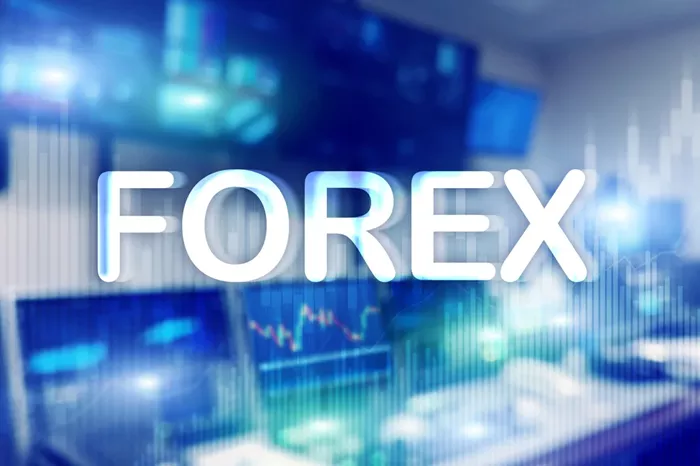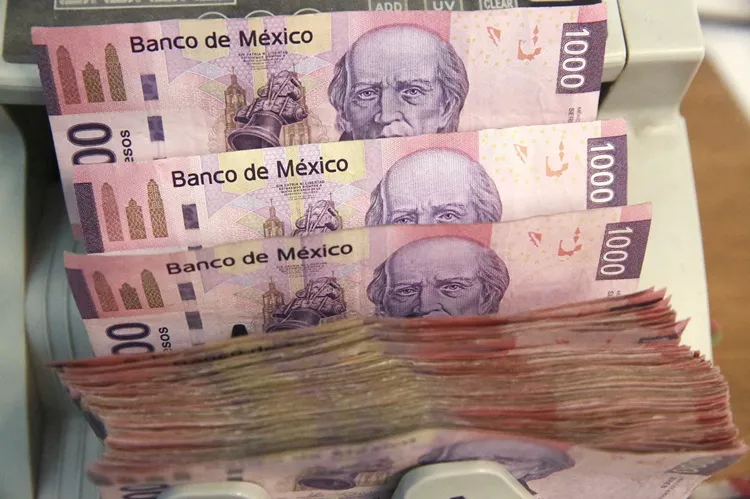The exchange rate between the U.S. dollar (USD) and the Australian dollar (AUD) is one of the most frequently traded currency pairs in the global foreign exchange market. As two major currencies, the USD and AUD play an important role in international trade, finance, and investment. Understanding the exchange rate between these two currencies is crucial for businesses, investors, and individuals who deal with cross-border transactions.
In this article, we will explore the factors that influence the exchange rate between USD and AUD, examine historical trends, and discuss the implications of fluctuations in the exchange rate for various market participants.
Understanding the U.S. Dollar (USD) and Australian Dollar (AUD)
Before delving into the specifics of the exchange rate between USD and AUD, it is important to have a basic understanding of each currency.
The U.S. Dollar (USD)
The U.S. dollar is the official currency of the United States and its territories. It is also the world’s primary reserve currency, meaning it is held in large quantities by central banks as part of their foreign exchange reserves. The U.S. dollar’s strength is influenced by several factors, including the economic performance of the United States, monetary policy set by the Federal Reserve, interest rates, and inflation rates.
The U.S. dollar is commonly used as a benchmark currency in international trade and finance, and it is often used as a reference currency for pricing commodities such as oil, gold, and other assets.
The Australian Dollar (AUD)
The Australian dollar is the official currency of Australia, as well as some of its territories and Pacific Island nations. The AUD is a popular currency for global investors due to Australia’s strong economy and its status as a major exporter of commodities, particularly minerals, energy, and agricultural products.
The strength of the Australian dollar is influenced by various factors, such as the economic performance of Australia, the country’s trade balance, commodity prices (especially for iron ore, coal, and gold), and interest rate policies set by the Reserve Bank of Australia (RBA).
What Is an Exchange Rate?
An exchange rate is the value of one currency relative to another. It represents how much of one currency is required to purchase a unit of another currency. Exchange rates fluctuate constantly due to the dynamic nature of global financial markets.
In the case of the USD/AUD exchange rate, it indicates how many Australian dollars are needed to buy one U.S. dollar. For example, if the exchange rate is 1 USD = 1.30 AUD, this means that one U.S. dollar can be exchanged for 1.30 Australian dollars.
Types of Exchange Rates
Exchange rates can be categorized into two main types:
Floating Exchange Rate: This is the most common type of exchange rate, where the value of a currency is determined by the forces of supply and demand in the open market. The USD/AUD exchange rate is a floating exchange rate, meaning it fluctuates based on economic factors and market sentiment.
Fixed Exchange Rate: In a fixed or pegged exchange rate system, the value of a currency is tied to another currency (such as the U.S. dollar) or a basket of currencies. Countries that adopt a fixed exchange rate maintain the value of their currency within a narrow band relative to the anchor currency.
Factors That Influence the USD/AUD Exchange Rate
Several factors impact the exchange rate between the U.S. dollar and the Australian dollar. These factors can be broadly categorized into economic, political, and market-related factors. Below, we will explore these in detail.
1. Interest Rates and Monetary Policy
Interest rates set by central banks play a crucial role in determining the value of currencies. The U.S. Federal Reserve and the Reserve Bank of Australia both set interest rates to achieve their respective economic objectives, such as controlling inflation and supporting economic growth.
U.S. Federal Reserve (Fed): The U.S. Federal Reserve is responsible for managing U.S. monetary policy. When the Fed raises interest rates, the U.S. dollar tends to appreciate because higher interest rates make U.S. assets more attractive to investors, driving up demand for the dollar.
Reserve Bank of Australia (RBA): Similarly, when the Reserve Bank of Australia raises interest rates, the Australian dollar tends to strengthen. Conversely, when the RBA lowers interest rates, it can weaken the AUD as investors seek higher returns elsewhere.
The difference in interest rates between the U.S. and Australia often drives demand for either the USD or the AUD. For example, if the U.S. raises interest rates while the RBA keeps rates unchanged, the USD may strengthen against the AUD, as investors seek higher returns in the U.S.
2. Economic Performance
The economic performance of both countries influences their respective currencies. Strong economic growth typically leads to a stronger currency, while a weak economy can result in a depreciation of the currency.
U.S. Economic Growth: As the world’s largest economy, the U.S. has a significant influence on the USD. A strong U.S. economy with low unemployment, high consumer spending, and rising GDP can lead to a stronger dollar.
Australian Economic Growth: Australia is a resource-rich country with a strong export sector, particularly in commodities such as iron ore, coal, and gold. The performance of these sectors has a direct impact on the Australian economy and, consequently, the value of the Australian dollar.
The exchange rate between the USD and AUD can shift in response to changes in economic conditions. For example, a strong U.S. economy may lead to an appreciation of the USD, while a slowdown in Australia’s economic growth may weaken the AUD.
3. Commodity Prices
Australia is a major exporter of commodities, particularly minerals, energy resources, and agricultural products. As a result, the value of the Australian dollar is closely tied to global commodity prices.
Commodity Price Fluctuations: When commodity prices rise, the Australian economy benefits, and the AUD tends to appreciate. Conversely, when commodity prices fall, the Australian economy may weaken, and the AUD may depreciate.
Iron Ore and Coal: As Australia’s largest exports, the prices of iron ore and coal have a significant impact on the value of the Australian dollar. Higher prices for these commodities can lead to a stronger AUD, while lower prices can weaken it.
Gold: Australia is also a major producer of gold, and fluctuations in gold prices can have a similar effect on the AUD. When gold prices rise, the AUD often strengthens, as gold exports become more lucrative for Australia.
4. Trade Balance
The trade balance is the difference between a country’s exports and imports. A positive trade balance (trade surplus) means a country exports more than it imports, while a negative trade balance (trade deficit) means the opposite.
U.S. Trade Deficit: The U.S. has historically run a trade deficit, meaning it imports more than it exports. This trade imbalance can put downward pressure on the USD, as more dollars are flowing out of the U.S. to pay for imports.
Australian Trade Surplus: Australia typically runs a trade surplus due to its strong export sector. A trade surplus tends to support the Australian dollar, as foreign buyers need to purchase AUD to pay for Australian goods and services.
A trade deficit in the U.S. may weaken the USD relative to the AUD, while a trade surplus in Australia can support the AUD.
5. Political Stability and Risk
Political stability is an important factor that influences currency values. Countries with stable political environments are generally seen as safer investments, which can strengthen their currency.
U.S. Political Stability: The U.S. is considered politically stable, and the USD is often seen as a safe-haven currency in times of global uncertainty. However, political gridlock, budget deficits, and debt ceiling issues can create uncertainty and lead to volatility in the value of the dollar.
Australian Political Stability: Australia is also considered politically stable, but it is smaller in global influence compared to the U.S. Political events, such as elections or changes in government policies, can influence the value of the Australian dollar.
Global political events, such as trade disputes or geopolitical tensions, can impact both the USD and AUD. For instance, uncertainty surrounding U.S. elections or changes in Australian government policy can lead to fluctuations in the exchange rate between the USD and AUD.
6. Market Sentiment and Speculation
Market sentiment and speculation also play a role in currency fluctuations. Investors and traders in the foreign exchange market react to news, data releases, and economic reports, which can influence their buying or selling decisions.
Investor Sentiment: Positive economic data from the U.S. or Australia can lead to a stronger USD or AUD, respectively, as investors seek to capitalize on favorable conditions. Conversely, negative news can lead to a weaker currency.
Speculation: Speculators often trade currencies based on expectations of future economic conditions, interest rate changes, or geopolitical events. Large-scale speculative trading can drive short-term fluctuations in the USD/AUD exchange rate.
Historical Trends of the USD/AUD Exchange Rate
Over the past several decades, the USD/AUD exchange rate has experienced significant fluctuations. The strength of the USD and the AUD has been influenced by various economic and geopolitical factors.
Early 2000s: In the early 2000s, the USD was generally stronger than the AUD, with the exchange rate often hovering around 1 USD = 1.50 AUD.
Global Financial Crisis (2008): During the global financial crisis, the value of the Australian dollar fell sharply against the USD as global risk aversion increased, and investors flocked to the safety of the U.S. dollar. The exchange rate fell to below 0.60 USD = 1 AUD.
Post-Crisis Recovery: After the financial crisis, the AUD rebounded strongly, supported by strong demand for Australian commodities, especially from China. The exchange rate fluctuated between 1 USD = 0.90 AUD and 1 USD = 1.10 AUD in the following years.
Recent Years: In more recent years, the USD/AUD exchange rate has remained volatile, influenced by factors such as changes in interest rates, commodity prices, and global trade dynamics.
Conclusion
The exchange rate between the U.S. dollar (USD) and the Australian dollar (AUD) is influenced by a wide range of economic, political, and market factors. Interest rates, economic performance, commodity prices, and trade balances all play crucial roles in determining the relative value of the USD and AUD. While the U.S. dollar is often stronger due to the size and stability of the U.S. economy, the Australian dollar can appreciate during times of strong commodity prices and economic growth in Australia.
For traders, investors, and businesses involved in the foreign exchange market, understanding the factors that drive the USD/AUD exchange rate is essential for making informed decisions. Fluctuations in this exchange rate can have significant implications for cross-border transactions, international investments, and trade.
By staying informed about economic conditions, interest rates, and market trends, market participants can better navigate the fluctuations in the USD/AUD exchange rate and make more informed decisions in the global marketplace.
Related topics:


































